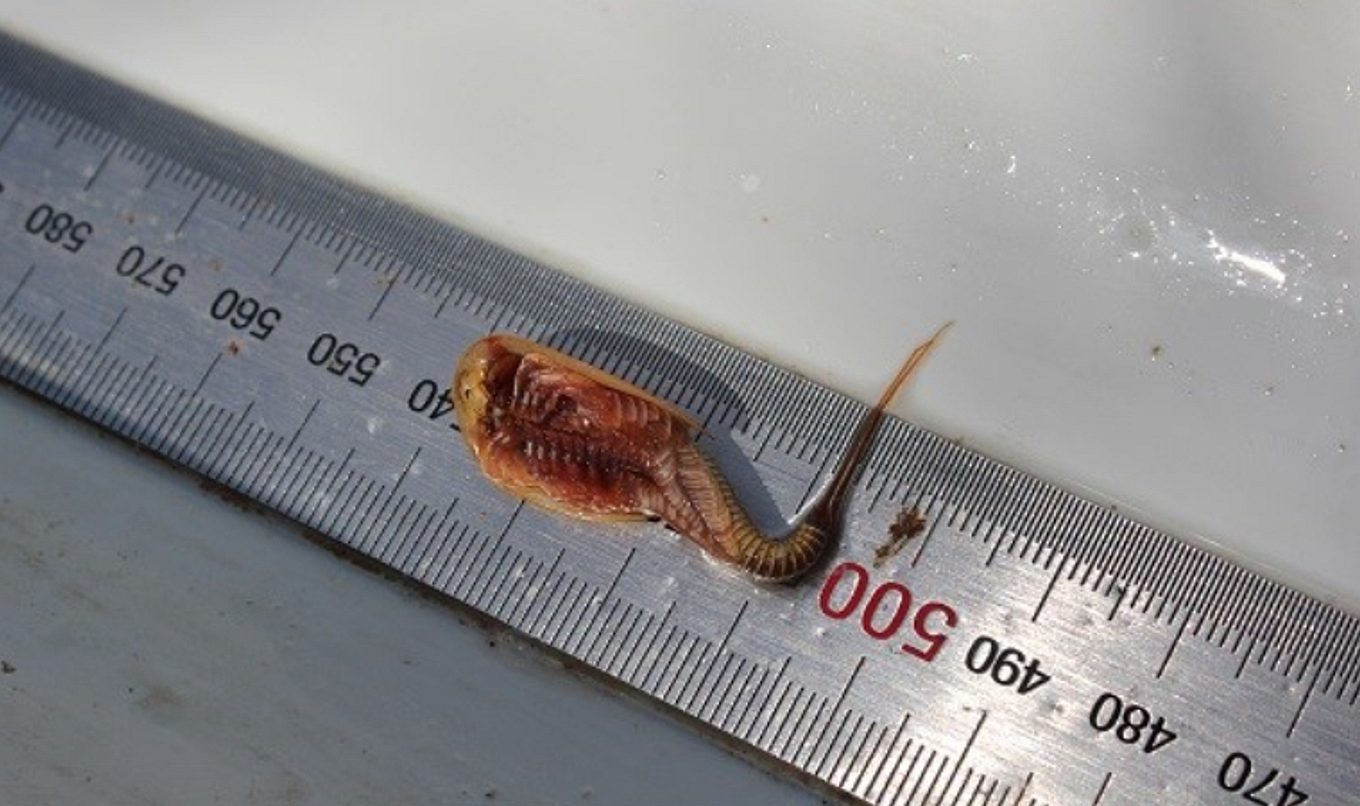A near ‘Living fossil’ discovered on Chowilla Floodplain
An unusual crustacean, known as a shield shrimp (Triops australiensis), was spotted recently by Department for Environment and Water (DEW) staff undertaking a native fish survey on the Chowilla Floodplain.

DEW wetlands ecologist Nathan Creeper said the curious little mini-beast caught their eye because of its similarity to the long extinct trilobite.
“While the term ‘living fossil’ is not truly accurate, the shield shrimp hasn’t really changed much in around 70 million years and it’s quite extraordinary to think that there were ‘Triops’ similar to these swimming around in pools of water when the first dinosaurs walked the earth,” Dr Creeper said.
“The shield shrimp can grow to 7.5 cm long and gets its name from the large shell covering its head and upper body.
“It uses its long, flexible tail and more than 60 legs to swim through the water.
“Shield shrimp also breathe through these legs and are part of a class of crustaceans called ‘branchiopods’ which literally means ‘gill-legged’.
“Despite their ‘shields’, these little crustaceans are quite vulnerable and are easy pickings for fish and water birds.
“They can be found in temporary lakes, or even small shallow pools of water and have the ability to withstand long dry periods and then remerge when the right conditions occur.
“The eggs are extremely hardy and appear like very fine dust. They will last for many years buried in sand or dirt and can be spread by the wind to different locations.”
Mr Creeper said the shield shrimp found at Chowilla is just one of many species, large and small that respond to the managed environmental watering activities that have occurred this spring (and in most years) to sustain this important icon site through The Living Murray program.
The native fish survey was undertaken during the operation of the Chowilla regulator to deliver environmental water to the Chowilla Floodplain, which is one of six Living Murray icon sites and part of the Riverland Ramsar wetland of international importance.
The Living Murray Program is a joint initiative funded by the New South Wales, Victorian, South Australian, Australian Capital Territory and Commonwealth governments, coordinated by the Murray–Darling Basin Authority.

